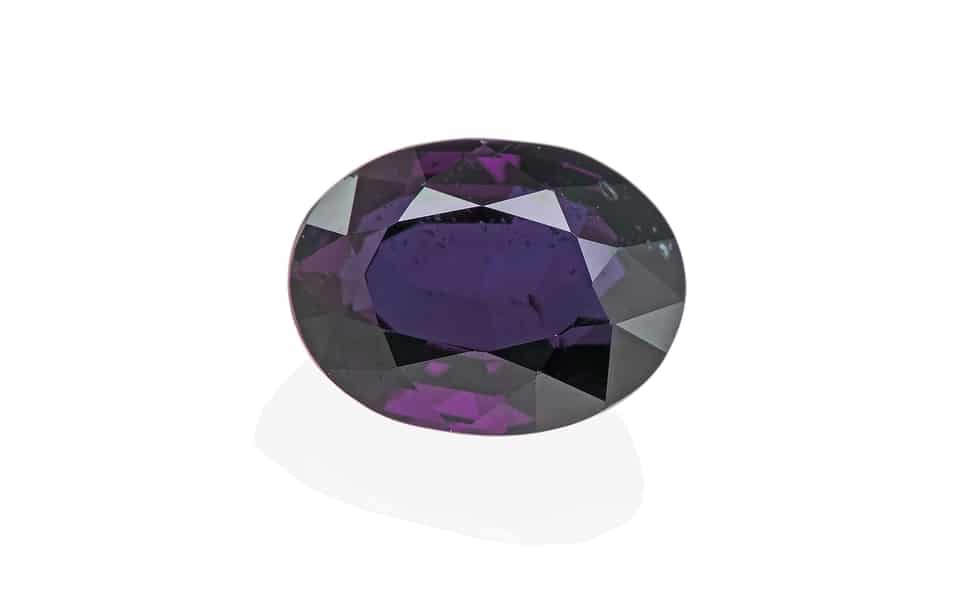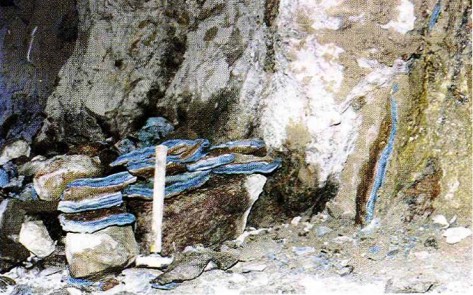
Dark purple chrysoberyl
By Dr. M.S. Krzemnicki, first published in Facette 28 (May 2023)

Since about three years, we see at SSEF occasionally chrysoberyl samples of very dark purplish to purplish brown colour, sometimes of quite impressive size (>10 ct). Based on chemical composition, these chrysoberyls show distinct concentration of chromium, but no evident change of colour, thus do not fit the criteria to be called alexandrite (see e.g. alexandrite definition by LMHC, information sheet No. 9, https:// www.lmhc-gemmology.org/gemstones). In fact, these stones contain much too high concentrations of chromium – nearly 3 wt% Cr2O3 in the chrysoberyl of Figure 1 – to create a colour change effect in these stones when observed under different standard illumination (daylight and incandescent light). The high chromium concentration results in two very dominant chromium-related absorption bands at about 570 and 410 nm in the absorption spectrum (Figure 2). As a consequence, light transmission is mainly restricted to the reddish part of the visible range with some minor contribution by the “transmission window” in the blue- green range, hence the dark purple colour of this chrysoberyl. In addition, the high chromium concentration increases the general absorbance of the stone, thus deepening the colour with a dark tone.



